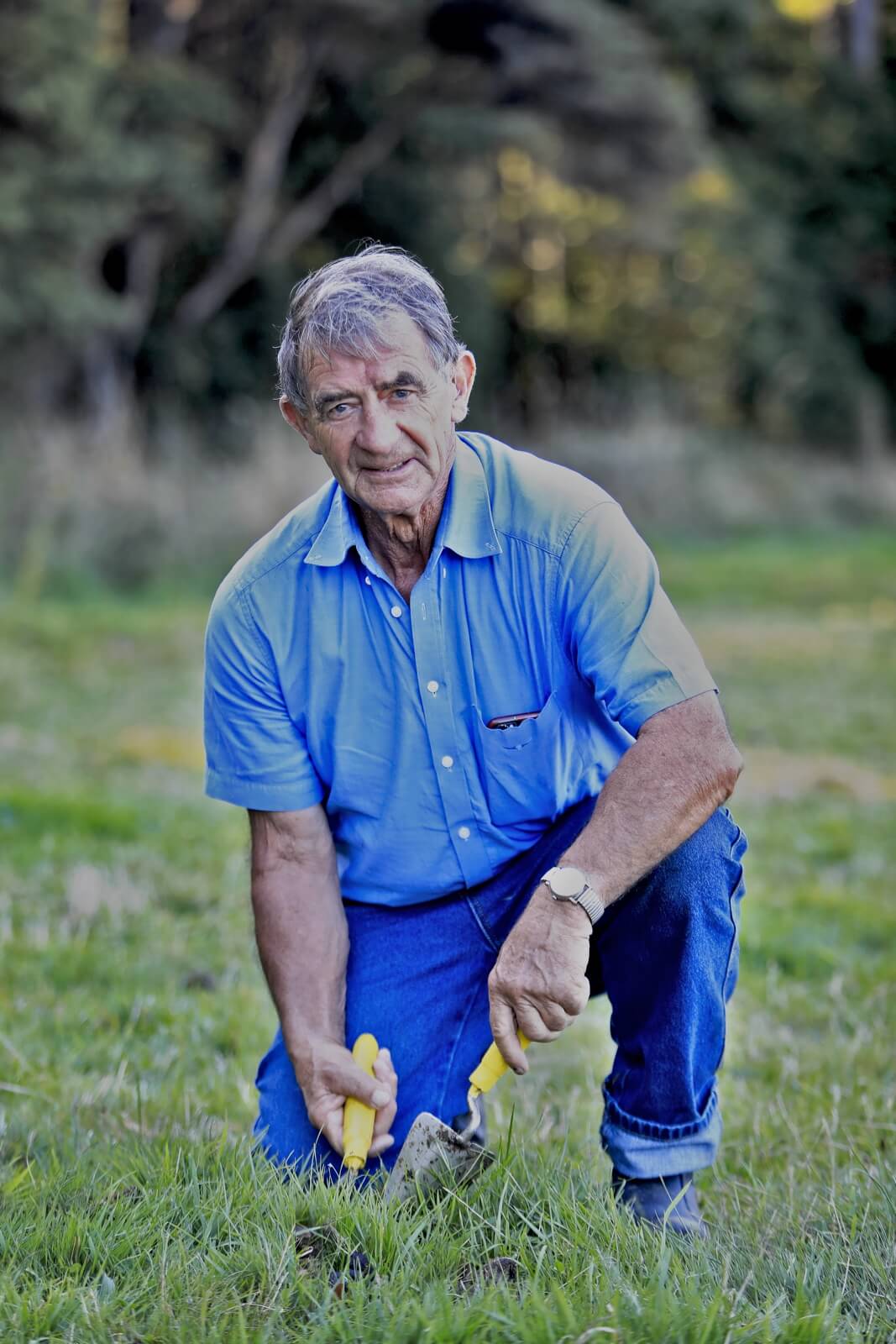A dung beetle expert – John Feehan
From 1963 to 1991, John and the CSIRO team in the dung beetle program introduced dung beetles into Australia. Following the project’s completion, John recognised a serious need for more beetle advocacy in the agriculture industry, and founded the soil care management consultancy business SOILCAM. Based in Canberra, SOILCAM collects and redistributes dung beetles. For the past 26 years John has harvested dung beetles from locations where they are established and redistributed over 6000 starter colonies to areas of Australia where they’re needed.
John believes we’re standing on the cusp of dung beetles’ potential, and that many of the dung beetles introduced into Australia have not yet reached their geographic and climatic limits. SOILCAM specialises in providing advice to livestock producers on which dung beetles are best suited to their local environment. The driven ecologist also supplies a free dung beetle identification service so producers can identify which species they already have. John has identified more than 5500 samples from all over Australia. John’s ideal mixture of beetles would be one that has beetles that are active across all seasons and are both day and night flyers to maximise dung burial.
Timing is crucial when harvesting dung beetles. John targets a dung pad just after each beetle’s flight time which the best chance of finding that species. After harvesting and back in Canberra, John separates the beetles by species before cleaning and weighing them and calculating the numbers. John can’t walk past a dung pad without taking a photo and has hundreds in his collection. John says his ‘greatest delight to walk around a 400-head cattle property where the paddocks are as clean and clear as a fairway on a golf course and there are no, or very few, bush flies’.
John is also involved in education about the benefits of dung beetles, teaching a generation how the now-typical experience of Australians enjoying mealtimes outside was a rare event until about 30 years ago, when it was an almost impossible occurrence due to bush flies. It was actually illegal in some places, such as the ACT and Queensland, to serve a meal in a public venue outdoors, with the health department considering outdoor meals a health hazard due to the number of flies. People in Canberra can now eat outdoors just as they do in Paris, London and New York thanks to five species of dung beetle that John has established around the region.
Across Australia cattle drop 300 million cow pads, or around 500,000 tonnes of dung, each day, with each dung pad potentially producing more than 2000 bush flies which could live for around three-weeks. Bush fly larvae need about six days in dung to develop, but dung beetles can bury a dung pad in one to three days, thus denying the bush flies a place to breed. Here, vital nutrients are also recycled back into the soil, with good dung beetle activity ensuring millions of holes are dug in the paddock, meaning less water and nutrient run-off from Australian paddocks during rain events. And John knows that dung beetles provide benefits that extend far beyond the farm, removing dung that might otherwise be washed into creeks, rivers, estuaries and oceans.
